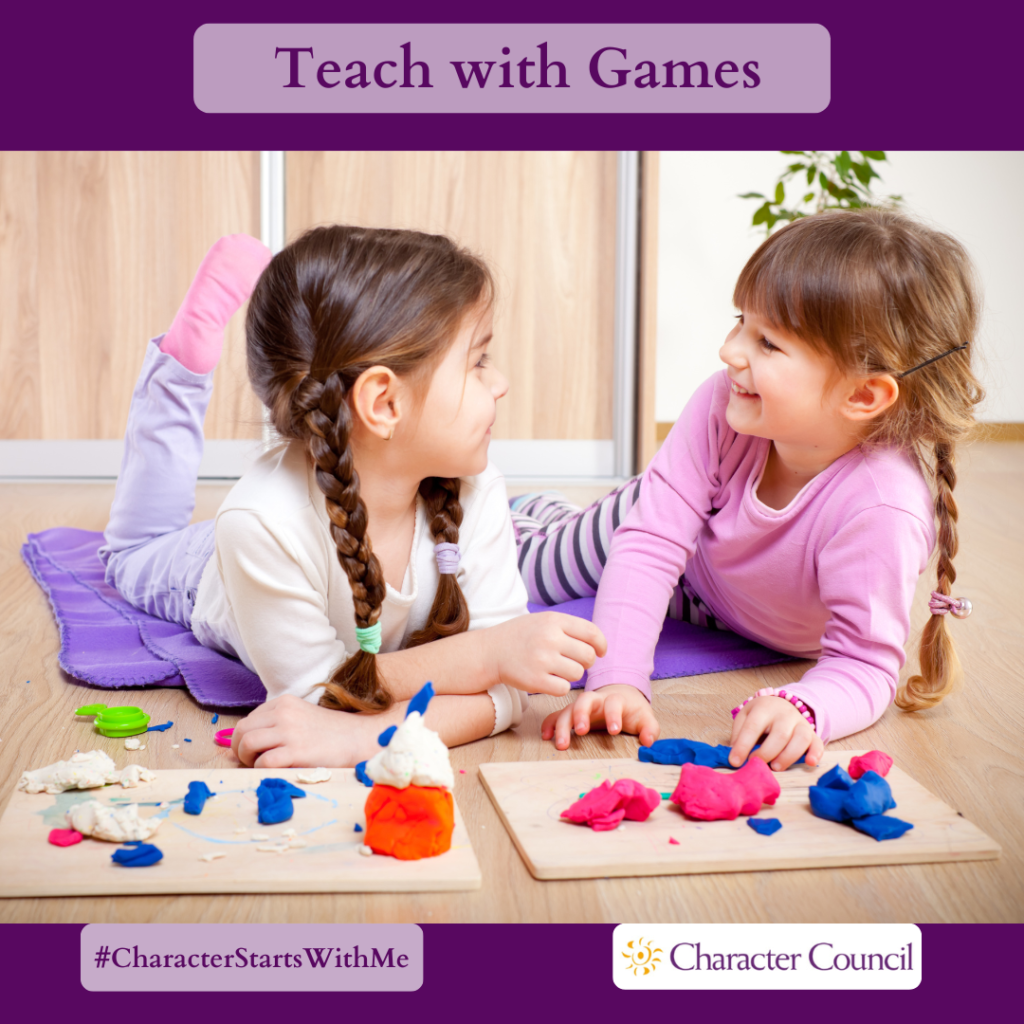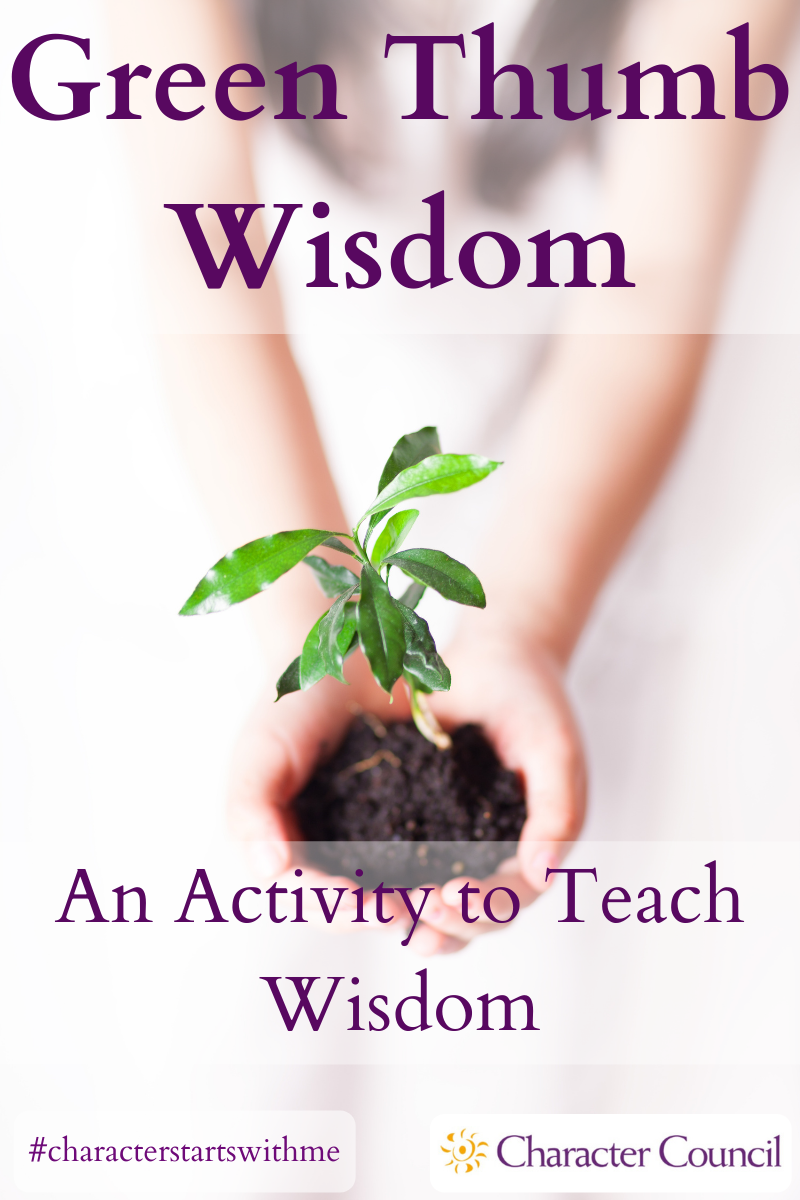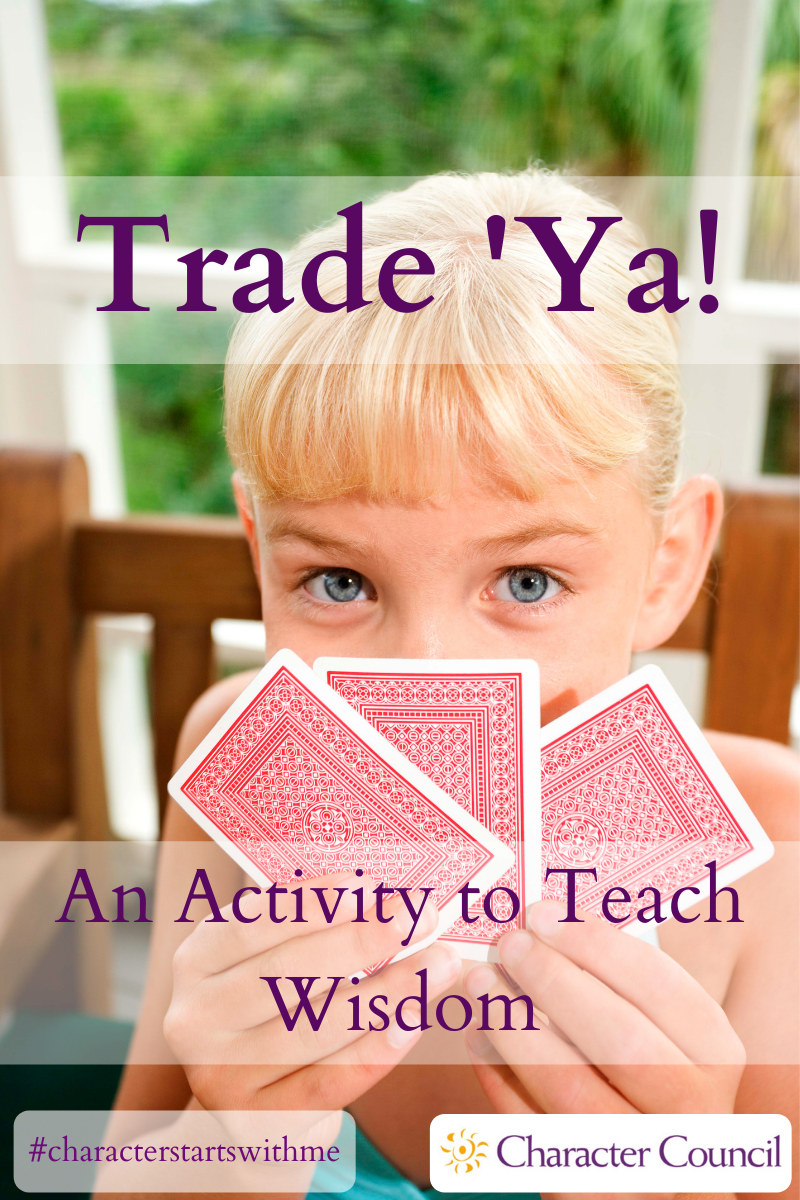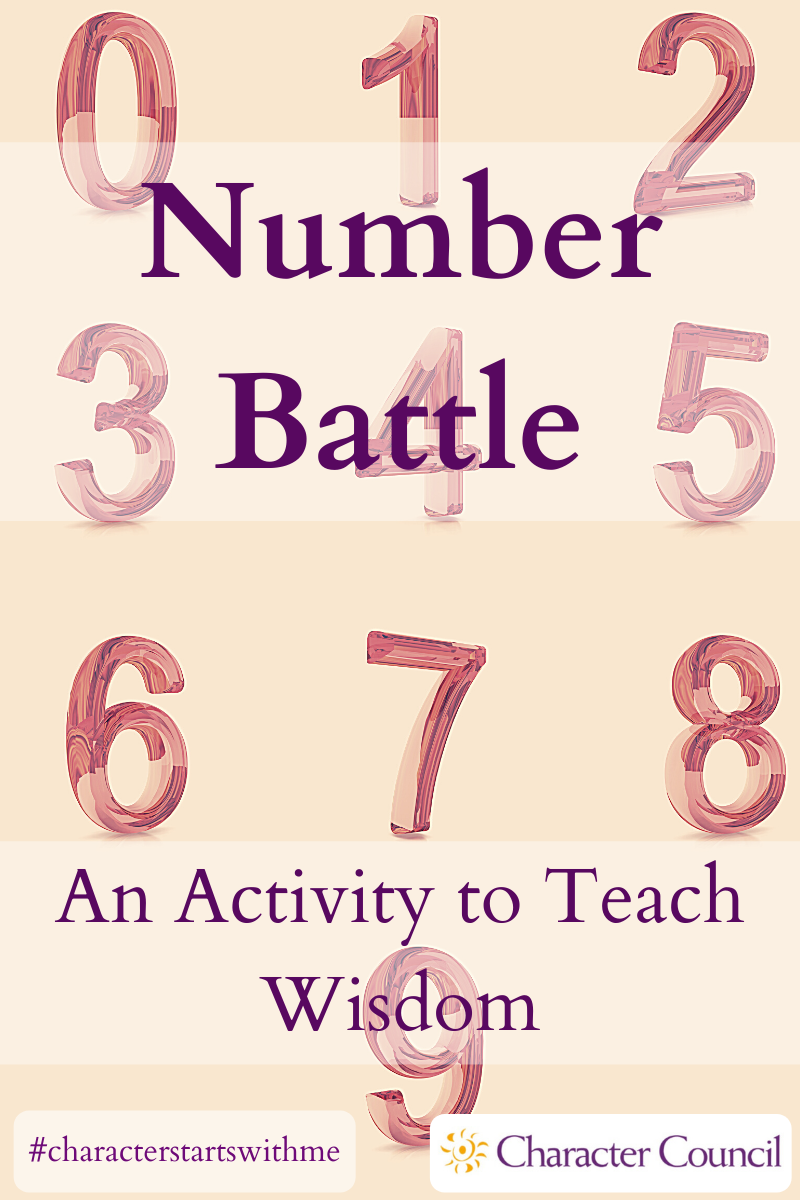
Wisdom Activities
The activities here are fun ways to teach character. The game aspect makes the lesson more memorable. Each activity has processing questions at the end. Without processing the activity, the exercise is just a game. To make it a stronger lesson when you process it, relate the character quality to a core value that your organization promotes.
Consider picking a student to run the activity. You will need to give them time ahead of the activity to prepare. Another option is to pick a few students to run the activity for a younger classroom after you have run it for your class. Encourage your students to repeat it in the home for younger siblings or even parents.


Green Thumb Wisdom
For this activity, you will need to have a single potted plant to use for the demonstration. On index cards write the following instructions or something similar, one instruction per card. You will need to have one index card per student. A download of cards is available.
Keep me in a closet.
Place me where I will get adequate sunlight.
Place me directly under a powerful grow light 24 hours a day.
Water me faithfully.
Water me whenever you remember.
Water me once then never again.
Water me with fertilizer according to package directions.
Put fertilizer on me every day.
Water me with coffee.
Water me with orange juice.
Water me with soda pop.
Put me in the refrigerator.
Put me in the bathroom.
Put me right above the stove.
Keep me in the darkest spot in the house.
Put me outside in the winter.
Remove all of my leaves.
Water me every day until the water pools on the top of the soil.
Take me out of the dirt and let me lay on the table.
Only water me in February.
Place the plant where everyone can see it. Go to each student (or they can come to you) and let them choose a card, without seeing the instructions. Have them read the card (or read it for younger students). Ask them if it is a wise thing to do for the plant and what they think will happen to the plant if they do what the card says. If they don’t know, they can poll the rest of the class. In some cases, the plant will flourish and in others, it will wither or die.
To process the activity, ask these or similar questions:
- Have you ever done anything like these actions toward a plant?
- Was it difficult or easy to determine if the action was wise?
- If you had never done something, how did you determine if something was wise or not?
End by comparing the treatment of the plant to making wise choices for our body. Compare choices about nutritious food and getting enough sleep to the care of the plant and how our bodies react to the care decisions we make. Ask if our bodies react as quickly as a plant does.

Trade ‘Ya!
Start with an ordinary deck of playing cards. Larger classes may want to use 2 decks. Give several cards (3 -10 depending on the age of the students – and the size of their hands!) to each student and then encourage them trade cards back and forth in an attempt to get the best hand possible. Let them know that the value of each card will be revealed at the end of the game. Once the trading has stopped you can reveal the value of the cards. Choose values that do not necessarily correspond to what would be expected. (For a math connection, you can give them age-appropriate formulas to apply to the numbered cards such as multiply odd numbered cards by 2 and add 1 to even numbered cards.) When they have calculated their points, see who has the most and least points.
To process the activity, ask these or similar questions:
- How did not knowing the rules make this game difficult to play?
- If they had been given the opportunity to ask questions, what would they have asked in order to make wise decisions?
- How often do you make decisions on what to do without having any idea what the goal is?
- What are some ways to get information when you are trying to make a real decision?
- Will you remember this card game and ask questions on your next decision?

Number Battle
Pair up all the students. Each should have something to write on and something with which to write. Have the students sit back-to-back. Each will write down a number between 0 and 10. The player with the higher number gets that number of treats or points minus the amount written by the opponent. For example, if they chose 7 and 5 the student who had chosen the higher number gets 2 treats/points (7 – 5 = 2). Play several rounds and have them keep score. For young students, you may choose to use manipulatives for picking their numbers and determining their points. You may also want to use 0 – 5.
When finished, process the reading with these or similar questions:
- Did you enjoy that game?
- What happens if you both pick 10 all the time? (0 points)
- What combination of numbers produced the highest single score? (10 and 0)
- Would anyone pick 0 on purpose?
- What if you took turns choosing 0 and 10, what would the tally of treats be then? (This is the cooperative wisdom that allows each person to win the most points. If anyone figured this out, ask them to share how they did it?)
- Will you remember the game when you are learning something new?